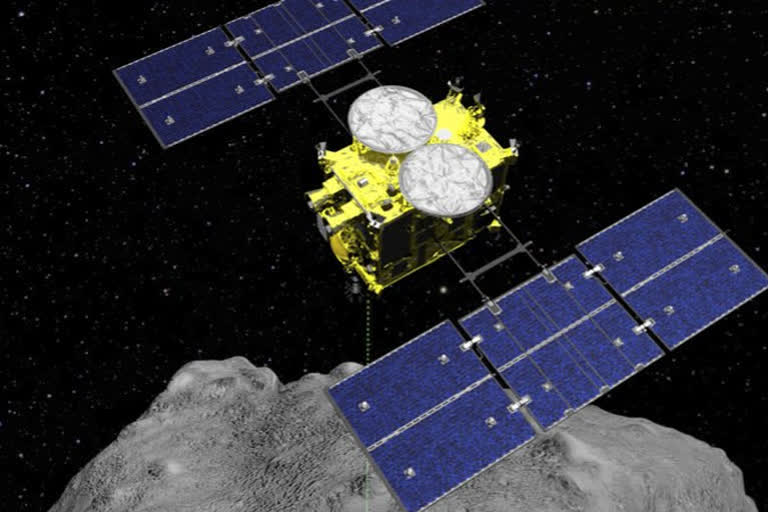Tokyo: Japan's space agency said its helicopter search team has retrieved a capsule, which is carrying asteroid samples that could explain the origin of life, that landed on a remote area in southern Australia as planned Sunday.
"The capsule collection work at the landing site was completed . . .," the space agency said in a tweet about four hours after the capsule landed. We practiced a lot for today ... it ended safe." Hayabusa2 had successfully released the small capsule on Saturday and sent it toward Earth to deliver samples from a distant asteroid that could provide clues to the origin of the solar system and life on our planet, the Japan Aerospace Exploration Agency said.
Early Sunday the capsule briefly turned into a fireball as it reentered the atmosphere 120 kilometers (75 miles) above Earth. At about 10 kilometers (6 miles) above ground, a parachute was opened to slow its fall and beacon signals were transmitted to indicate its location.
It was great ... It was a beautiful fireball, and I was so impressed," said JAXA's Hayabusa2 project manager Yuichi Tsuda as he celebrated the successful capsule return and safe landing from a command center in Sagamihara, near Tokyo. I've waited for this day for six years." Beacon signals were detected, suggesting the parachute successfully opened and the capsule landed safely in a remote, sparsely populated area of Woomera, Australia, said JAXA official Akitaka Kishi.
About two hours after the capsule's reentry, JAXA said its helicopter search team found the capsule in the planned landing area. The retrieval of the pan-shaped capsule, about 40 centimeters (15 inches) in diameter, was completed about two hours later.
The fireball could be seen even from the International Space Station. A Japanese astronaut, Soichi Noguchi, who is now on a six-month mission there, tweeted: Just spotted #hayabusa2 from #ISS! Unfortunately not bright enough for handheld camera, but enjoyed watching capsule! Hayabusa2 left the asteroid Ryugu, about 300 million kilometers (180 million miles) away, a year ago. After it released the capsule, it moved away from Earth to capture images of the capsule descending toward the planet as it set off on a new expedition to another distant asteroid.
The capsule descended from 220,000 kilometers (136,700 miles) away in space after it was separated from Hayabusa2 in a challenging operation that required precision control.
JAXA officials said they hoped to conduct a preliminary safety inspection at an Australian lab and bring the capsule back to Japan early next week. Dozens of JAXA staff have been working in Woomera to prepare for the sample return. They set up satellite dishes at several locations in the target area inside the Australian Air Force test field to receive the signals.
